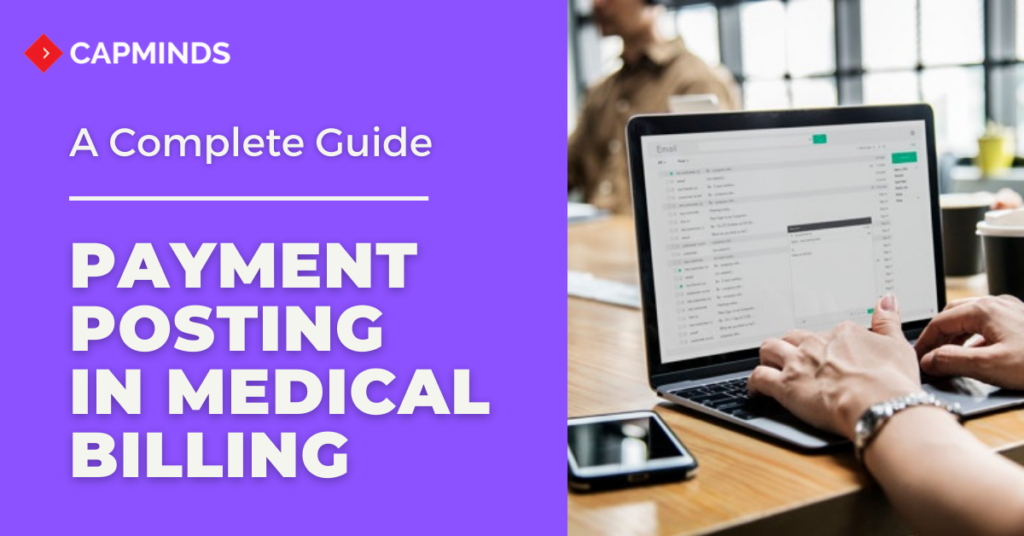A Guide To Payment Posting In Medical Billing
The payment posting is a day to day challenges faced by almost every healthcare provider. It would be impossible to complete the reimbursement process without payment posting by the medical billing companies. That’s why they recognize it as an important component of the revenue cycle management process. In this article, we explain everything about payment posting in medical billing.
What Is Payment Posting?
Payment posting allows to view payments and provides a clear picture of practice financial structure, making it very easy to identify the issues and fix them quickly.
If the claim is processed towards payment from the payer then a check will be issued or EFT (Electronic Fund Transfer) will be done to the provider from the payer along with the EOB. The claim will be paid to the provider only if the patient has signed the assignment of benefits (AOB) documents. If the patient has not signed the AOB, then the payment will go to the patient.
RELATED: PROACTIVE MEDICAL BILLING TIPS TO INCREASE REVENUE
Why accurate payment posting is important?
Consider payment posting team incorrectly posted the payments to an incorrect patient account. We know it very well, the AR team works closely towards the outstanding balance of the claims from aging reports. Due to an incorrect payment posting from the team the balance of the paid account will still be reflecting. In this scenario, both the time and efforts of the AR team on reimbursing the claims will be wasted as they follow up on paid claims instead of following unpaid claims.
Incorrect payment posting also affects the accuracy of claims submissions to secondary and tertiary payers. The chances are more when the primary insurance payment is not posted correctly, it is possible for the secondary and tertiary payers may get billed out incorrectly.
EOB – Explanation of Benefits:
It is also called an Explanation of Review (EOR) or Electronic Remittance Advice (ERA), which will be issued by the payers to healthcare providers (Billing office) to communicate the decision taken after the determination of the claim.
EOB contains the below information:
- Payer Name
- Payer Address
- Name of the patient
- Provider Name and address
- Member ID#: It is also known as the policy identification number
- Claim received Date: It is the date the claim received by the payer from the provider (Billing office).
- Payment or denial date: It is the date the claim is processed or denied by the payer.
- DOS – Date of Service: It is provided from healthcare provider to patient.
- CPT Code – Procedure code
- Billed Amount – It is also called as charge amount for each service performed by healthcare providers.
- Claim Number – It is also called a Document control number or Transaction Control Number, which will be assigned by the payer for each claim as soon as they receive it in their system.
If the claim paid, it holds the following reasons
- Allowed Amount: It is an amount, payer deems fair for a specific service or procedure. AA = PA+ PR.
- Paid amount: Paid Amount = Allowed Amount – Patient responsibility.
- Patient Responsibility: This is the balance percentage of reimbursement that the patient or his secondary insurance (if have anyone) has to pay according to his policy with the insurance company.
- Write off Amount: It is an amount that is waived off by the provider. Write off Amount = Billed Amount – Allowed Amount.
- Check date
- Electronic Fund Transfer# (EFT#)
- EFT date
RELATED: HOW TO PREVENT MEDICAL BILLING AND CODING ERRORS?
Benefits Of Payment Posting
Easy to Analyze Revenue Cycle Management: Once the payment posting is done accurately, it presents a perfect instance to analyze the medical billing and maximize the account receivables.
Denial Resolution: The intelligent way of resolving the claim denials is preventing them. There can be prevention tactics to control and monitor instructions from the insurance companies by maintaining up-to-date files and other records that provide information on new medical billing and coding regulations.
Final Thoughts
Having an efficient payment posting system provides an efficient view of your day to day financial picture. CapMinds helps you to speed up your medical billing process with advanced services including eligibility check, payment posting, patient billing, AR follow up, claim submission, and denial management.




